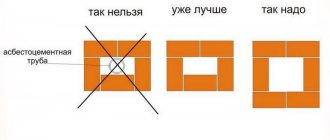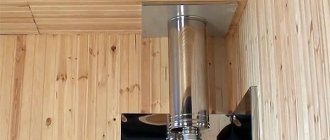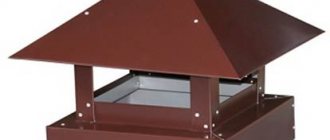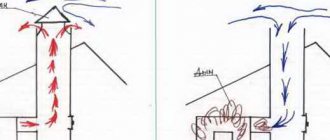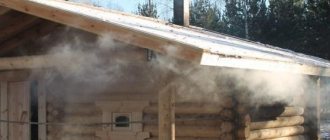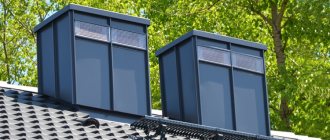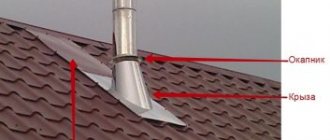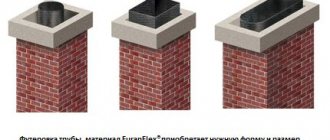- Soot formation
- Method one: cleaning with a brush
- Mechanical method
- Prevention
Often, when the oven is used incorrectly, clogging occurs, which precludes its further use for its intended purpose. Before you clean the pipe in the bathhouse, you should understand the causes of the problem. There are many effective cleaning methods, the choice of each of them depends on the desire of the owner and his financial capabilities.
Checking the technical condition of smoke ducts
First of all, you should definitely make sure that the pipeline is in good condition and intact. When it works intermittently, it is important to determine the reason for its incorrect functioning. The following steps are shown for this:
- visual inspection;
- use of special video systems;
- study of indirect signs that may indicate blockage.
Visual inspection
This is the simplest technique that does not require professional skills. It is enough to disassemble the pipeline and inspect the parts from the inside. If design features do not allow you to remove individual elements, you must take any lighting fixture and lower it into the stove from the roof or through special inspection holes (when provided). If there is a large amount of soot deposits, it will be noticeable even to a layman.
Special video systems
How and with what to clean the chimney pipe in a bathhouse from soot if you don’t want to dismantle the structure, climb onto the roof of the building and contaminate your clothes? You can call specialists with a video system to your home. This option is especially welcome if the stove is complex and has some defective areas. Procedure:
- the device is connected to the PC;
- a chamber with a light element is placed in the oven;
- specialists examine the surface from the inside along its entire length to identify blockages;
- Video recording is carried out, the file is subsequently reviewed, after which the information received is analyzed.
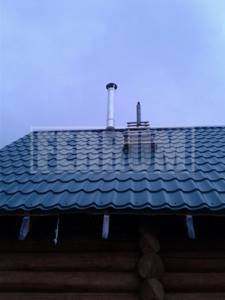
This method is expensive. However, it is important to remember that it is he who will allow us to assess the scale of the problem with one hundred percent probability.
Indirect signs
You can use them as a guide when diagnosing furnace problems:
- decrease in work efficiency - prolonged combustion of firewood;
- smoke entering the house through cracks;
- poor traction;
- presence of black smoke and soot flakes in the air;
- bad smell when lighting wood;
- sudden extinguishing of fire.
Slow kindling
Due to difficult ventilation, smoke quickly fills the entire volume of the chamber, so the firewood burns much more slowly than before. You should hurry to solve the problem, since this sign indicates that the furnace will soon fail.
Smoke comes in
If a smoke smell begins to enter the room through the damper, it is important to stop ignition and clean the stove as soon as possible. It is completely clogged and can no longer function.
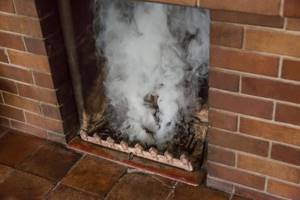
Poor traction
You should definitely pay attention to the color of the flame. If all is well, it is bright and shoots upward. Otherwise, it fades and fluctuates in different directions. The draft can be checked using a lit match - bring it to the firebox and follow the flame (it should deviate inward).
Black smoke
It may indicate more than just blockage. Perhaps low-quality firewood was selected, and the solution to the problem will be to select a different fuel.
Soot flakes
The pipe is often clogged if soot flakes fly in the room where the stove is heating. If this problem is not solved in a timely manner, the chimney will become very clogged, and correcting the situation will require a lot of time and enormous labor costs.
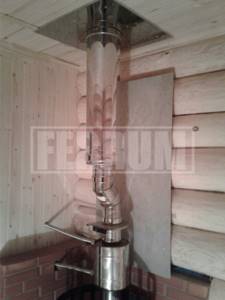
Arbitrary flame extinction
Sometimes the fire can go out suddenly. If there is little or no draft, there is not enough oxygen in the firebox. It is strictly not recommended to leave the stove in this condition.
Unpleasant odor during heating
This is what carbon monoxide smells like when it is not being released due to a blockage. This situation requires immediate ventilation and stopping the heating of wood.
Video description
The effectiveness of chemical cleaning agents is quite high. You can verify this by watching the video:
It is important! Do not try to get rid of deposits in the chimney using firecrackers or medicinal ampoules, which explode in the firebox when exposed to fire. This is dangerous and can simply destroy the oven.
Mechanical method
Cleaning a chimney in a private house should be carried out in calm and dry weather in order to minimize the risk of falling from the roof and make your work easier. But even under these conditions, the use of insurance in the form of a rope attached to a belt and a ridge or other durable roof element is mandatory.
The main tool of a chimney sweep is a brush with stiff bristles, which is used to scrape off plaque from the inner walls of the smoke channel. It is important to understand that such plaque deposits more actively on rough surfaces, protrusions and even scratches. And if it is difficult to damage a brick channel with a metal brush, then it is better to use plastic bristles for cleaning metal pipes and sandwiches.

Brush with nylon bristles Source media2.24aul.ru
See also: Catalog of companies that specialize in the sale and service of stoves and fireplaces
Its diameter should be slightly larger than the internal diameter of the pipe. In the case of a square and rectangular chimney, you will need another small brush to clean corners that are inaccessible to the main tool.
In addition to these, you may need:
- scraper for removing solid coked deposits;
- core for weighting the brush or breaking through debris jams with a diameter of about 2/3 of the internal cross-section of the chimney. At the end of the brush there should be a loop for attaching the core;
- rope or wire to which the tool will be tied. Furnace service organizations use more modern and convenient flexible telescopic holders.

Not wanting to spend money on a rarely used tool, some homeowners use homemade devices, making a brush from pine or juniper branches and tying a water-filled brush to it plastic bottle. Another option is a one and a half liter plastic bottle, the walls of which are cut into strips of 1.5-2 cm. Then a wire is passed through its bottom and neck and attracted to each other, while the strips fold, forming rigid loops in a circle, which allow for fairly high-quality cleaning chimney.
Note! Using weights, dumbbells, hammers and other heavy objects instead of a round core can cause an irregularly shaped load with a displaced center of gravity to get stuck in the pipe.
Before starting work, close all openings in the room through which soot can fly out: cleaning doors, firebox door. The open hearth is covered with film, gluing it around the perimeter with tape.
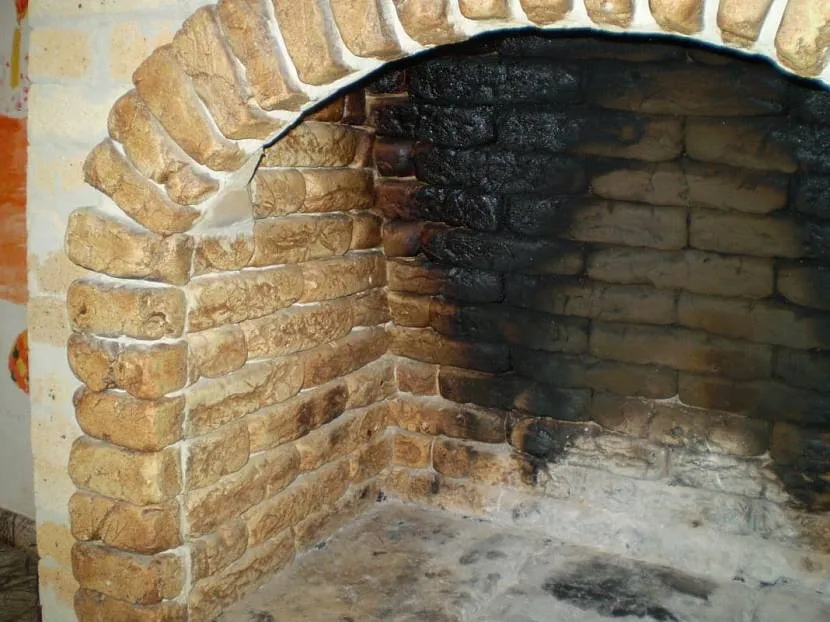
First, the fireplace is cleared of ash and a container is placed inside for falling soot Source pechiexpert.ru
Metal chimneys, their operation and care
Such structures can be single-walled and insulated. The material is resistant to temperature changes, changes in atmospheric pressure, prevents the accumulation of condensation and maintains performance characteristics for a long time. The advantages also include:
- high level of security;
- ease of maintenance;
- durability.
Modern models, which can be found in the Ferrum catalog, are more advanced. They have a special internal enamel coating that protects against rapid clogging. However, all the advantages do not relieve the owners from the obligation to clean it regularly.
Chemicals to combat soot
To reduce the need for chimney sweep services, you can use chemicals to prevent the formation of soot - liquids, powders or briquettes that must be added to burning wood. All these means contribute to the destruction of the soot layer and its shedding down the walls of the chimney.
The most popular means:
- anti-carbon powder PHC - burned simultaneously with firewood, 150-120 g is enough for one ton of fuel;
- Kominichek cleaner is a product made in the Czech Republic and sold in the form of a package with five sachets weighing 14 g;
- chimney sweeper log - has the shape of a bar, when burned, substances are released that clean out carbon deposits along with the flow of combustion products exiting through the chimney;
- Cheerful Chimney Sweep powder contains resins that lower the temperature and help burn out carbon deposits; it is not a toxic product, which sets it apart from its competitors.
You can buy all of the above chemicals at any hardware supermarket.
According to the instructions, one bag is enough to clean a stove or fireplace; two bags are required for a wood-burning heating boiler. The bag should be thrown onto the burning wood without opening it and the firebox door should be closed. The dose cannot be increased.
If the soot layer is very thick, it is better to repeat the procedure. For prevention purposes, it is advisable to burn one sachet every two weeks. In addition to removing soot, this product increases the efficiency of wood-burning heating appliances and allows you to save money when purchasing fuel.
The second most popular means is the “Chimney Sweeper” log - a block (briquette), the combustion of which releases substances that affect soot deposits and contribute to their shedding down. The main purpose of this chemical cleaner is to prevent narrowing of the cross-section of chimneys due to soot and carbon deposits.
Stove maker's note: in large Russian stoves it is necessary to burn two Chimney Sweep briquettes at a time.
“Chimney sweeper” consists of sawdust, coal wax with coal dust, ammonium sulfate, urea, zinc chloride, sodium sulfate, silica and phosphorus oxide. This product is especially effective for brick chimneys.
Before using the Chimney Sweep for the first time, you must make sure that there are no loose bricks, debris, bottles or bird nests in the chimney. The most effective way to burn briquettes is on hot coals. Additives entering the pipe affect its inner surface for up to two weeks. All this time, soot falls into the firebox from above. After two weeks, it is advisable to clean the elbow and smoke damper.
Types of blockages and the need to clean the chimney in a bathhouse
If the oven is not used properly, it will clog. Some problems can be prevented in advance using a set of preventive measures, others are eliminated only when detected. What are the most common causes of clogs?
Soot formation
If the pipe in the attic has not been insulated, drops of moisture may be found on the surface. They absorb the products of wood combustion, after which soot is formed. Gradually, with use, this layer becomes thicker, and over time the stove becomes completely clogged.

Condensation accumulation
If damp wood was used during kindling, a lot of steam will be generated. It disrupts traction and promotes the rapid formation of soot deposits on the internal walls. For this reason, it is important to store wood in a warm, dry place with good ventilation.
Foreign objects getting inside
If the diameter of the smoke channels is large and there is no protective cap, there is a risk of foreign objects getting into it. At first, they do not affect the functioning of the chimney in any way, but over time, as they accumulate, the draft worsens and disappears.
Resin deposition
The type of wood used for kindling greatly influences the blockage. If coniferous wood is used, a lot of resin is produced during combustion; it sticks to the pipe from the inside. Under no circumstances should you burn plastic, plywood fragments, or chipboards. Plum, birch and other deciduous trees are the most suitable options.
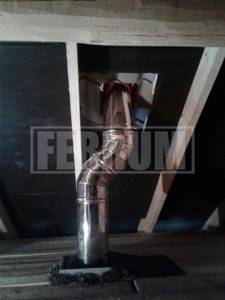
Ash accumulation
Designs with many bends and transitions clog much faster than simple ones. If your house has a complex chimney with bent sections, it is recommended to install special hatches in places near the bends, through which it will be convenient to subsequently clean it, removing excess debris.
Why does the stove smoke when the chimney is clean?
Smoke from the stove can occur even if the chimney is clean; there may be several reasons. In addition to soot deposits in the chimney, smoke obstruction can cause:
- lack of a windproof cap on the chimney - in this case, the fireplace or stove smokes in high winds;
- cracks in the stove masonry—in windy weather, air pockets are created in the chimney, which redirect combustion products through the cracks into the room;
- a large volume of ash in the blower, disrupting draft;
- burnt oven wall;
- doors that are intended for cleaning the oven are not closed tightly enough;
- using brushwood or straw as fuel;
- a gas outlet channel located below the combustion door;
- increased level of humidity in the chimney.
If there is too much moisture in the chimney, then you need to put thin sticks or dry alcohol into the cleaning window and set it on fire. At the same time, you should light the stove and close the window after traction is restored.
Methods for cleaning a chimney
There are many cleansing options. All methods can be divided into 3 large groups:
- mechanical;
- chemical;
- use of folk remedies.
The choice of one type or another depends on the financial capabilities and personal preferences of the owner of the building. They all have both advantages and disadvantages.
Mechanical method
For cleaning, you will need a brush whose diameter exceeds the dimensions of the furnace channels, a strong cable or flexible stick for convenient immersion of the brush, a weighting agent 2 times smaller than the width of the hole. This is the so-called work with a ruff.
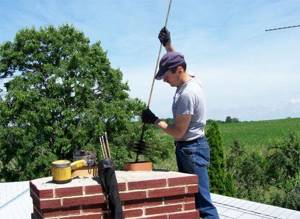
Chemical method
How to clean a pipe in a bathhouse if it is clogged, but you don’t want to act mechanically? The chemical method is based on the process of burning certain compounds, leading to the elimination of blockages without damaging the material of the structure. There are many drugs and other agents that act in a similar way.
Kominichek
Used to prevent clogging. It operates on the principle of a catalytic effect - soot turns into carbon dioxide. Due to its properties, the drug eliminates the risk of deposits igniting.
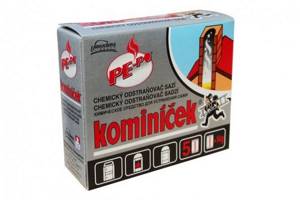
Chimney sweep
If you regularly use the oven, it is recommended to use this preventative product at least 2 times a month. If you do not light the bath very often, you can use the Chimney Sweep once every 8-10 weeks.

Anti-carbon chemical composition
This is a special powder with a special composition that allows you to eliminate plaque located on the inner walls of the pipe. Average consumption: 200 g per 1 ton of firewood. However, these indicators may change up or down depending on the manufacturer.
Salt
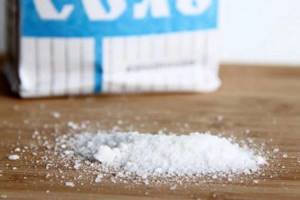
If the stove is very clogged, this remedy will be ineffective. It is better to use it for preventive purposes. This method must be used at least once every 2 weeks, otherwise it will not bring results. Stages:
- light wood in the stove;
- throw a handful of table salt into the firebox;
- wait some time for a chemical reaction to occur that prevents the accumulation of soot.
Smoke box
The container contains a special composition. It is placed in the firebox during the process of lighting the wood. Over the course of 2-3 hours, the product acts on the blockage and removes it. The effect after using the box lasts up to 2 weeks, the next use is indicated after about 3 months. One of the main advantages is that “Smoke” does not smell.
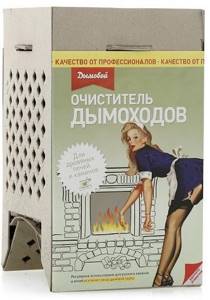
Vortex
A wooden log has a mass of 750 g. With its help, you can remove all the deposits that have formed. It is necessary to place the log on the firewood during ignition and let it burn until the end.

POLESHKO-TE
Application procedure:
- light wood;
- place POLESHKO-TE there;
- maintain an interval of several hours;
- do not remove the resulting ash, since the product will be effective for another 1-2 uses of the oven.
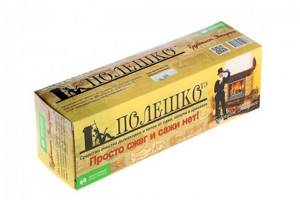
SAGINET
Used for preventive purposes to prevent the formation of blockages. Advantages:
- removes soot;
- increases the heat transfer of firewood;
- increases cravings;
- valid for up to 2 weeks after use.
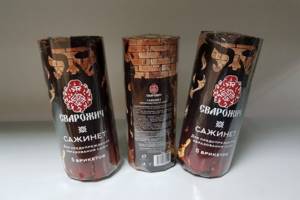
How to clean the oven using folk remedies
If you are against chemicals, they can be replaced with alternative folk remedies. They cope no worse with soot and dried fat, but do not pose a threat to health. Chemical residues on the walls of the oven evaporate during the next cooking and enter the human body with the food consumed. Gas stoves and electric ovens can be brought to shine using gentle folk remedies.
To help clean the oven:
- vinegar;
- soda;
- lemon juice;
- laundry soap;
- ammonia;
- salt.
Let's tell you in more detail about the most effective ways to help clean your oven.
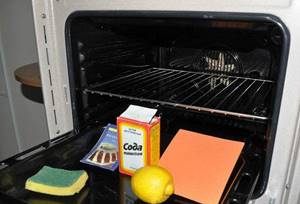
Baking soda
The benefits of soda in the kitchen and at home cannot be overestimated. It helps a lot in cleaning the oven from old grease and cleaning the glass window, which very quickly becomes covered with soot, until it shines. In addition, it removes the unpleasant burning smell that often comes from the oven during cooking.
Use a wet sponge to wipe all surfaces of the cabinet, then sprinkle them generously with baking soda. Take a special sponge with an abrasive surface and go over all the walls except the glass window. Leave the soda for half an hour so that it has time to eat away the fat. After 30 minutes, wipe off any remaining powder with a damp cloth.
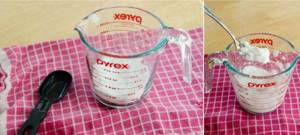
Soda + vinegar
This mixture is intended for particularly advanced cases. With its help, you can wash off old greasy marks from the oven at home. When these two substances interact, hydrogen is released, which can destroy the deposit of old soot.
Dampen a rag or sponge in table vinegar and wipe the walls and shelves in the oven. Then sprinkle baking soda on the inside of the door. It is difficult to sprinkle on the side walls, so dampen them with a damp sponge and then apply the powder so that it sticks to the vertical surface. Leave the oven open for a couple of hours. After the specified time, use a cloth soaked in water to remove the remaining soda and softened fat. This is the most effective way to easily remove soot from even the dirtiest stove.
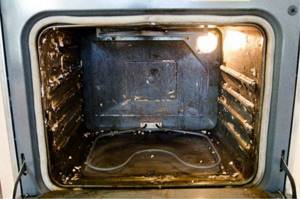
Lemon juice
Lemon juice is an acid, and it easily helps cleanse fat. The first method is suitable for frequent oven cleaning, as it will not help remove old soot. Mix the juice of one lemon with warm water in equal proportions. Dampen a sponge with acid and treat all internal surfaces. After half an hour, rinse off the lemon juice with a damp cloth. For convenience, many housewives pour the solution into a container with a spray bottle. This helps to distribute the substance evenly along the walls of the oven.
The second method is more effective and helps to get rid of even old fat. Pour 200 ml water, 30 ml dishwashing detergent and sliced lemon into a heatproof container. Preheat the oven to 150 degrees and let the resulting mixture boil for half an hour. The evaporation will soften the stuck-on fat, which you just need to remove with a damp sponge.

Ammonia
To say goodbye to old grease stains and soot in the oven, you can use ammonia. The procedure is complex, but its effectiveness has been confirmed by many housewives. You will need 2 heat-resistant containers, a glass of water and a couple drops of alcohol.
Pour water into one container, place it in the oven and bring to a boil. After this, turn off the oven. Add a couple of drops of ammonia to the second container. Place boiling water on the bottom shelf, and a container with alcohol on the top. Close the door tightly. It is advisable to do the procedure at night, and in the morning start cleaning the softened fat.
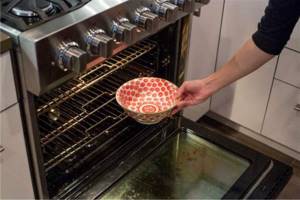
Salt
Salt perfectly softens old fat. To get rid of burning with its help, generously sprinkle salt on all surfaces of the oven and turn it on to heat “idle” for half an hour. After cooling, you will be surprised how easily the fat is removed from the shelves and baking sheet. This procedure has only one disadvantage: salt will not help remove fat from the walls.
As you can see, you can easily clean the kitchen at home. You don't have to spend large sums of money on cleaning products that negatively impact your family's health. It is better to try traditional methods and choose the most convenient option for yourself.
Recommendations for the operation of stoves and chimneys
A few points that are important to know so that the structure lasts a long time and does not become clogged:
- It is best to use hardwood for kindling;
- do not add firewood one log at a time;
- do not burn garbage in the firebox;
- fire frequently, but little by little, with small stacks of firewood, and a new stack should be placed in the firebox after the previous one has burned out at least halfway;
- the logs must be completely dry;
- do not completely load the firebox with logs;
- prepare properly for cleaning - select the appropriate tool, use protective accessories, follow the instructions provided by the manufacturer;
- Cleaning the chimney pipe in a bathhouse from soot will not be difficult if you follow safety rules and follow the procedure according to all the rules.
Prevention
To avoid having to disassemble the entire structure and spend money on cleaning, it is necessary to take preventive measures. It is enough to use one of the products monthly to prevent blockages and the accumulation of a thick soot layer.
What weather is best to do it?
All manipulations should be performed only in warm, dry weather. There should be no wind.

Foreign object
The most difficult contamination is the presence of a foreign body in the chimney, for example, a fallen brick or a fallen bird's nest. Occupying a fairly large space, such an item prevents smoke from escaping. You can get rid of it using the same weight on a rope or usually a pole, which is not difficult to push the debris from above. But if the thing has been in the depths of the chimney for a long time, then this method is unlikely to help.
The most effective tool will be a brush that has an adjustable handle with the ability to lengthen as it penetrates deep into the pipe by adding new sections. But if this does not help, in the case, for example, when the socket is located on the side, then you will have to disassemble the pipe and remove the “interference” with your hands.
Is it often necessary to clean sauna stove pipes? From garbage – once a year, that’s the minimum. But as for the build-up of soot, it all depends on its quantity and frequency of use of the steam room. By the way, the layer of soot depends on the fuel used.
Advice from the master!
If you burn charcoal, dry wood or fuel briquettes, there will be virtually no soot.
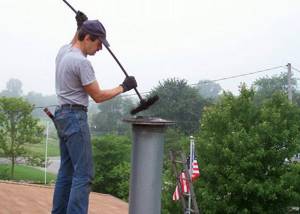
But we often throw everything into the firebox in the bathhouse - household waste, garbage, and even plastic and polyethylene. In this case, the chimney becomes clogged very quickly. Thus, by thinking about what you throw into the stove, and trying not to clog it with unnecessary junk, you will make your job of cleaning the pipes easier, and you will do it much less often.
How to make a sauna stove from a pipe? Sparks from the sauna pipe Correct installation of the sauna stove and its chimney: safety first! When is a Russian sauna heater needed to be repaired?
